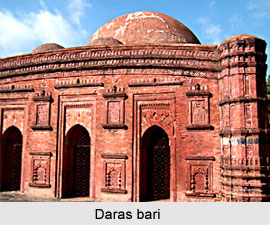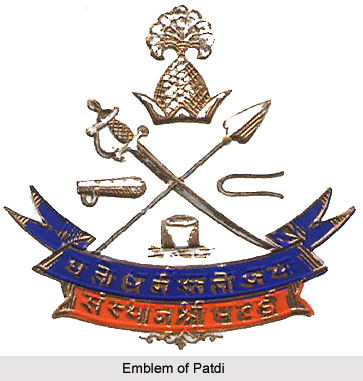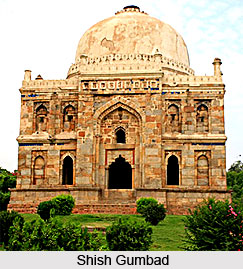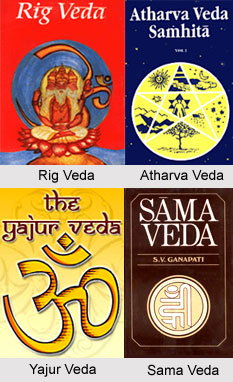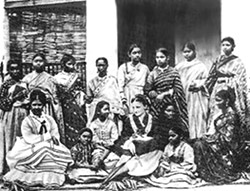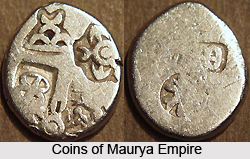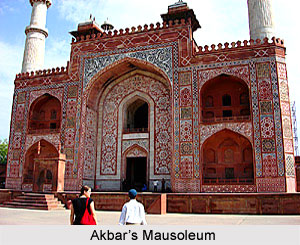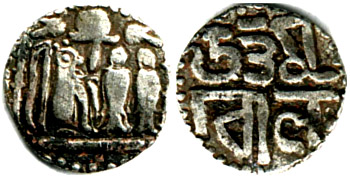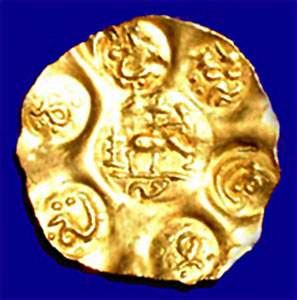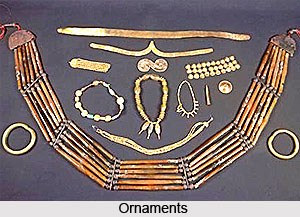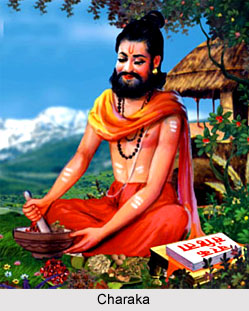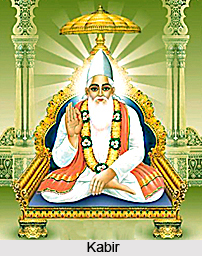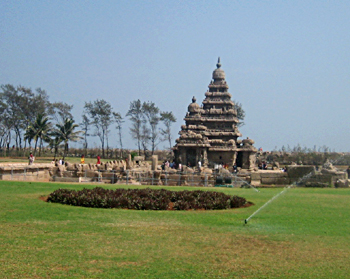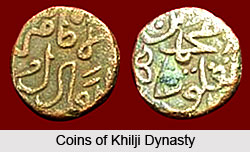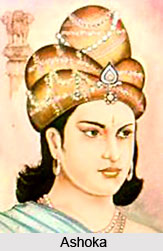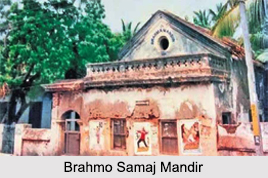 The unfolding of Hindu acculturative movements began with the initiative of a Bengali Brahman, Ram Mohan Roy (1772-1833). When he was born, he saw a world of diverse cultural influences. His father`s family followed Chaitanya, while his mother was a worshipper of divine female power. Professionally the Roys served the Muslim rulers and so they belonged to the Persianized section of the Hindu elite. This tie to non-Hindu government gave them a somewhat lowered status and they were not counted among the purest of the Brahmanical community. Ram Mohan Roy started to learn Bengali as his mother tongue and simultaneously studied Persian in order to prepare for the future employment and Sanskrit also befitted his priestly rank in future.
The unfolding of Hindu acculturative movements began with the initiative of a Bengali Brahman, Ram Mohan Roy (1772-1833). When he was born, he saw a world of diverse cultural influences. His father`s family followed Chaitanya, while his mother was a worshipper of divine female power. Professionally the Roys served the Muslim rulers and so they belonged to the Persianized section of the Hindu elite. This tie to non-Hindu government gave them a somewhat lowered status and they were not counted among the purest of the Brahmanical community. Ram Mohan Roy started to learn Bengali as his mother tongue and simultaneously studied Persian in order to prepare for the future employment and Sanskrit also befitted his priestly rank in future.
The Bramho Samaj questioned orthodox beliefs since he was very young and consequently came into conflict with his parents. The year after his father`s death in 1803, he published his religious views in a Persian tract titeled Tohfat al-Muwabhiddin (A Gift to Deists, 1804). In this book, Ram Mohan Roy publicly announced his criticisms of idolatry and polytheism. He initially researched in the world of private banking and from there he was drawn into the colonial milieu, for his clients included several English officers. He began to learn English and spent around nine years working for the East India Company. He retired from the company in 1814 and afterwards involved into the issues of social custom and religious belief.
The most dramatic question of Ram Mohan Roy `s varied career that made him thoughtful for the remainder of his life was the ritual of sati. The immolation of Hindu widows on their husbands` funeral pyre, though was not practiced widely throughout the Hindu community, but it was strong among the higher castes in Bengal. Roy had been deeply upset, when one of his female relatives committed sail. In 1818, he published the book A Conference Between an Advocate for and an Opponent Of the Practice of Burning Widows Alive. Here, he cited scriptural sources to validate his contention that sati was not required by Hindu law and was instead an incorrect accumulation; an example of degenerated Hinduism. Orthodox Hindus were shocked by his disapproval of what they considered a suitable and necessary ritual. The effects of Bramho Samaj on Indian society, brought into several positive changes amidst the countrymen.
Englishmen, particularly Christian missionaries joined in this argument thus calling for a government ban on sati. Finally in 1829, after much hesitation, the British-Indian government banned the ritual of sati. The law was now challenged by orthodox Hindus and placed before the Privy Council for final decision. Ram Mohan Roy traveled to England to give evidence in this case and also before Parliamentary hearings on the proposed Reform Act. It was on this trip that he unfortunately died and was buried in England. Sati as an issue led the Bramho Samaj into the general question of women`s rights, particularly the need for women`s education. The other major role of his thinking revolved around the explanation of proper Hindu belief.
The involvement of Bramho Samaj in to theism and his rejection of idolatry, Brahman priests, and their rituals, drew the basic outlines of his reconstructed Hinduism; for, to him, God and his existence can be proved by the complexity of reality. Alike the European rationalists, Roy envisioned God as the `almighty superintendent of the universe`. This rational and highly decent vision of Hinduism had been lost in the previous centuries through the unfortunate influence of the Brahman priests. The Bramho Samaj led Hinduism to its past purity.
Once this proper belief was re-established by Bramho Samaj, heinous customs such as sati, the restriction of women from education, detailed and useless rituals, admiration and polytheism would disappear. Ram Mohan Roy relied on his vision of explanation of Hinduism on the Upanishads, Vedas, and the Vedanta-Sutra. His own writings focused on the validity of these texts and the revised Hinduism that they justified. With this approach he transformed the erroneous activities of Hinduism into mere errors caused by ignorance. He also tried to justify his arguments on the ground of reason and social value. For Roy, religion was never judged only on its own internal scriptural proof, but it must also be looked into and justified by reason and thus be free of contradiction and functioning to sustain a valuable social order.
Ram Mohan Roy substituted scriptures for priests as the sources of proper knowledge. This doctrine enhanced the practice of translations of the Upanishads and of the Vedanta-Sutras into the vernacular languages as well as into English. The movements of Bramho Samaj also increased use of printing to make these texts and his personal writings available to all who wished to read them. This ended the prohibition against any but the first three varnas from reading the most sacred of Hindu literature. Now women, peasants, untouchables, and non-Hindus were under compulsion to read and study the sacred scriptures.
In 1821, while struggling with the Serampore missionaries, Ram Mohan Roy established his first journal, Brahmmunical Magazine. This bilingual magazine promoted his opinions to a literate audience. Soon a number of individuals and associations had their own journals, tracts, and translations. Religious debates were held in public by anyone who desired to do so. Although orthodox leaders complained about Ram Mohan Roy`s arrogance in assuming he could describe proper Hindu belief and custom. However, they had no option but to meet him in the new ground of public religious disagreement. The educational reforms by Ram Mohan Roy cannot go unnoticed.
The Bramho Samaj rejected missionary claims to superiority by pointing out that Christianity too was laced with superstition. If the superstitions were removed what remained was a simple code of religion and morality that would be admirably calculated to elevate men`s ideas to high and liberal ideas of one God. Bramho Samaj pursued equivalence as the basic relationship between the two religions.


